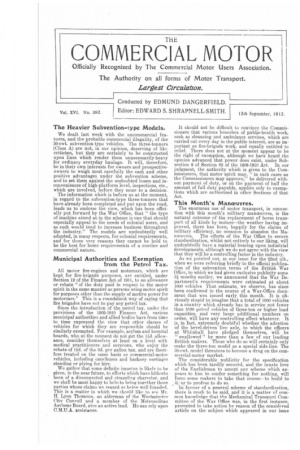The Heavier Subvention-type Models.
Page 1

If you've noticed an error in this article please click here to report it so we can fix it.
We dealt last week with the uncommercial features, and the probable commercial illegality, of the 30-cwt. subvention-type vehicles. The three-tonners (Class A) are not, in our opinion, deserving of like criticism, but they are certainly to be constructed upon lines which render them unnecessarily-heavy for ordinary everyday haulage. It will, therefore, be in their own interests for owners and prospectiveowners to weigh most carefully the cash and other positive advantages under the subvention scheme, and to set them against the undoubted losses and inconveniences of high-platform level, inspections, etc., which are involved, before they come to a decision. The information which is before us at the moment, in regard to the subvention-type three-tonners that have already been completed and put upon the road, leads us to endorse the view, which has been officially put forward by the War Office, that "the type of machine aimed at in the scheme is one that should especially appeal to the needs of colonial users, and as such would tend to increase business throughout the industry." The models are undoubtedly well adapted, in many respects, for colonial requirements, and for those very reasons they cannot be held to be the best for home requirements of a routine and commercial nature.




















